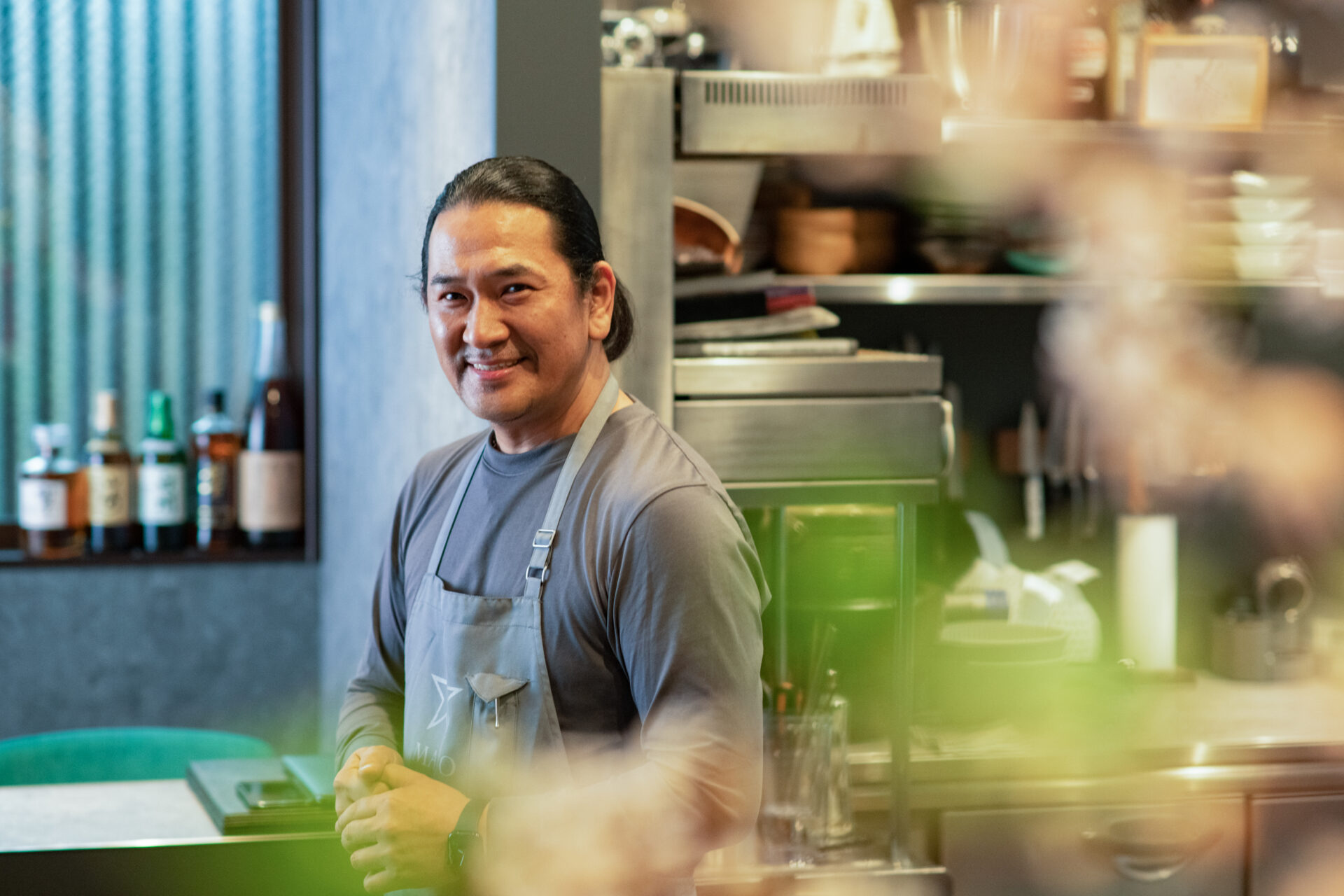I took a sip of the tea and was astonished.
I couldn’t help but ask, “Is this really tea?”
The drink had a concentrated, rich flavor and was so mellow that it had no hint of bitterness. It was like a natural wine with a hint of sweetness.
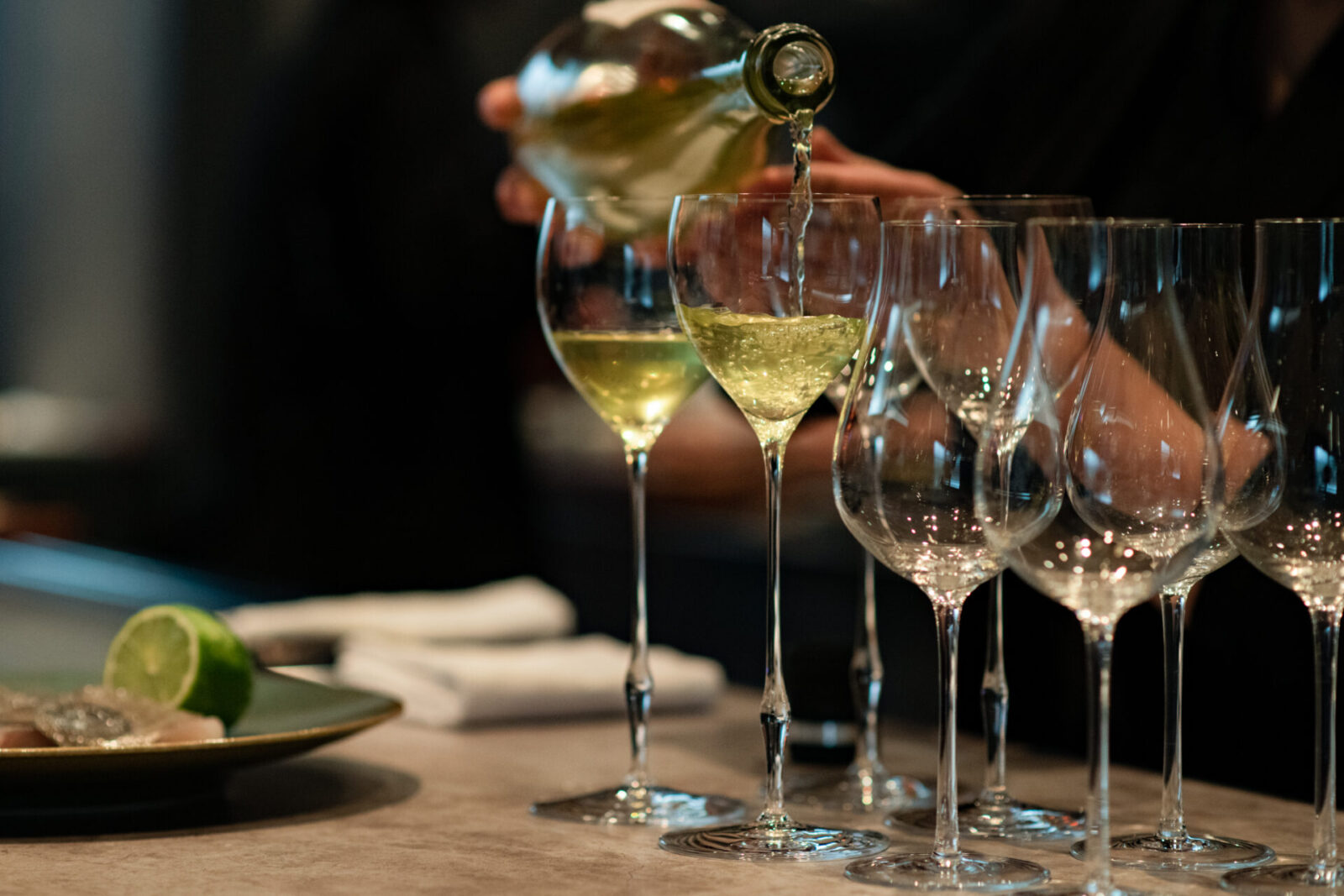
It was the first time I tasted a drink with so much umami in one sip. Some people describe the flavor as like a fine soup broth.
It was the beginning of a special tea experience, unlike any I experienced before.
The tea was brewed by Chef Tsutomu Nishimura, owner of MAVO∞, a French teppanyaki restaurant in Gion, Kyoto. He is a leading expert in tea pairing, which involves pairing tea with the food served in a course.
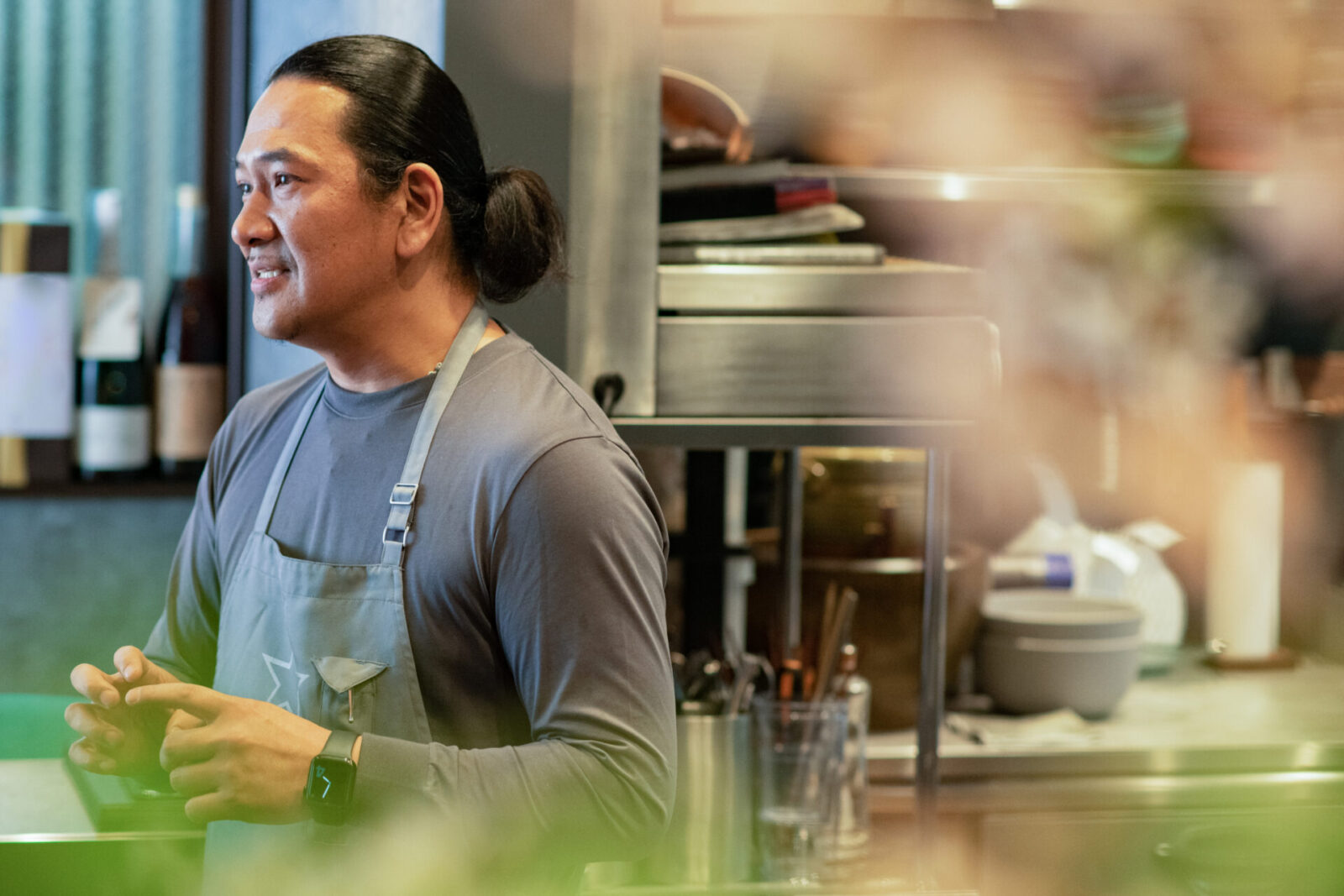
“Japanese tea culture is renowned around the world. I want to promote it both in and out of Japan.”
Nishimura came up with the idea of tea pairing for this purpose. While he was searching for ways to refine his cooking as a chef, he encountered Japanese tea and began exploring it’s complexworld.
We will introduce the culinary art and time created by MAVO∞ cuisine and the delighting tea pairing culinary experience.
“First, listen to the ingredients”
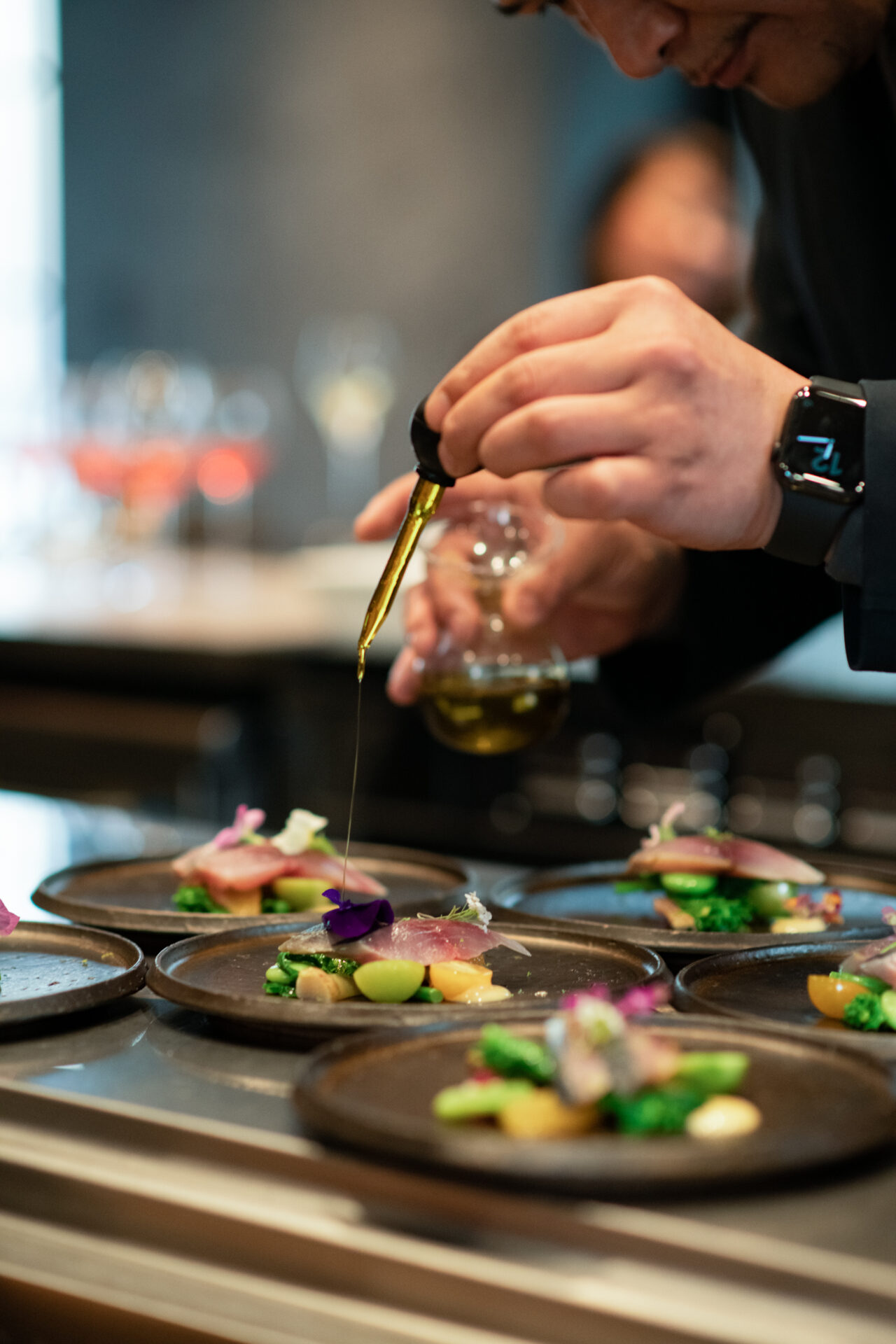
Although the menu at MAVO∞ is based on French cuisine, it follows the 72 micro seasons of the Japanese calendar, and is an expression of the seasons in Kyoto through each dish.
The 72 micro seasons are 24 seasons divided into five days each (the first, second, and last seasons). MAVO∞ uses seasonal ingredients from all over Japan and serves courses that evoke the delicate changes of the seasons of that time.
The farmers and producers provide the recommended ingredients of the day so Nishimura does not make specific orders.
“When the produce arrives, I open the box and listen to the ingredients’ voice first. As I converse with the vegetables and produce, ideas for how to cook it in the most delicious way comes to mind naturally.”
He gives thanks to the life each ingredient gives and creates delicate dishes. He then serves the dish with tea pairings that are made with different combinations of herbs and spices with Japanese tea as the base.
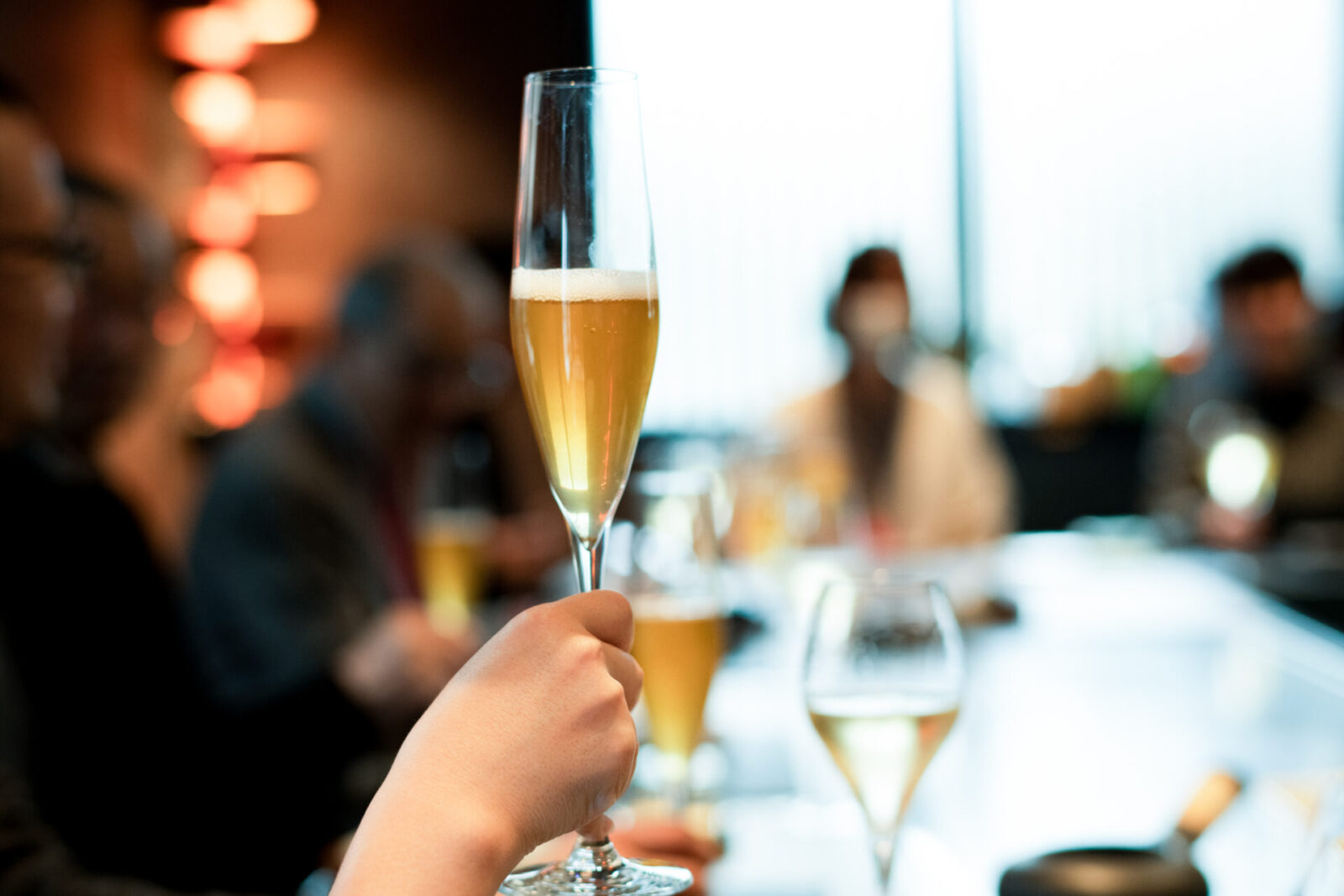
From the start, the course was full of surprises. The first tea was a slightly carbonated Awa Bancha tea that was like sparkling wine.
Awa Bancha tea is made in a unique process of fermentation with lactic acid bacteria. With Awa Bancha as the base tea, it was blended with apple vinegar, cardamom, lemongrass, and other herbs. The drink was paired with a white miso-based mackerel carpaccio, spring vegetables, and citrus fruits. The carefully garnished edible flowers reminded us of early spring.
The tea pairing further accentuated the umami of the mackerel.

The invisible wall between drinkers and non-drinkers
Although the tea poured in the wine glasses looked like an alcoholic drink, all of the tea drinks served here are non-alcoholic.
15 years ago, Nishimura retired from his position as the head chef of a hotel’s French restaurant and opened a small French restaurant in Odawara in order to pursue his own style of cuisine.
He reveals that, since then, he has always had a certain dilemma.
“As someone who serves food and watches the customers, I always noticed that there is an invisible wall between those who drink alcohol and those who do not.”
“As the course progresses, those drinking alcohol tend to become more talkative and the sound of their laughter changes very noticeably. On the other hand, those who don’t drink tend to stay more reserved and quiet.”

Nishimura began to wonder, “How can I bring people who can drink and those who cannot drink closer together in the same space, and help them share the experience of eating together?
Of course, he offered soft drinks on his menu. However, he was concerned that “the sugar in ginger ale and fruity drinks get in the way of the meal.”
Considering the fact that there are people who are alcohol intolerant, or people who enjoy drinking but cannot for any given reason, such as being the designated driver or a pregnant woman, there should be a high demand for attractive non-alcoholic drinks.
When enjoying a meal, one should not have to order a soft drink because there are no other options, but everyone should have the opportunity to order a special drink. This thought made Nishimura explore different ideas.
Life-changing cup of Gyokuro in Kyoto
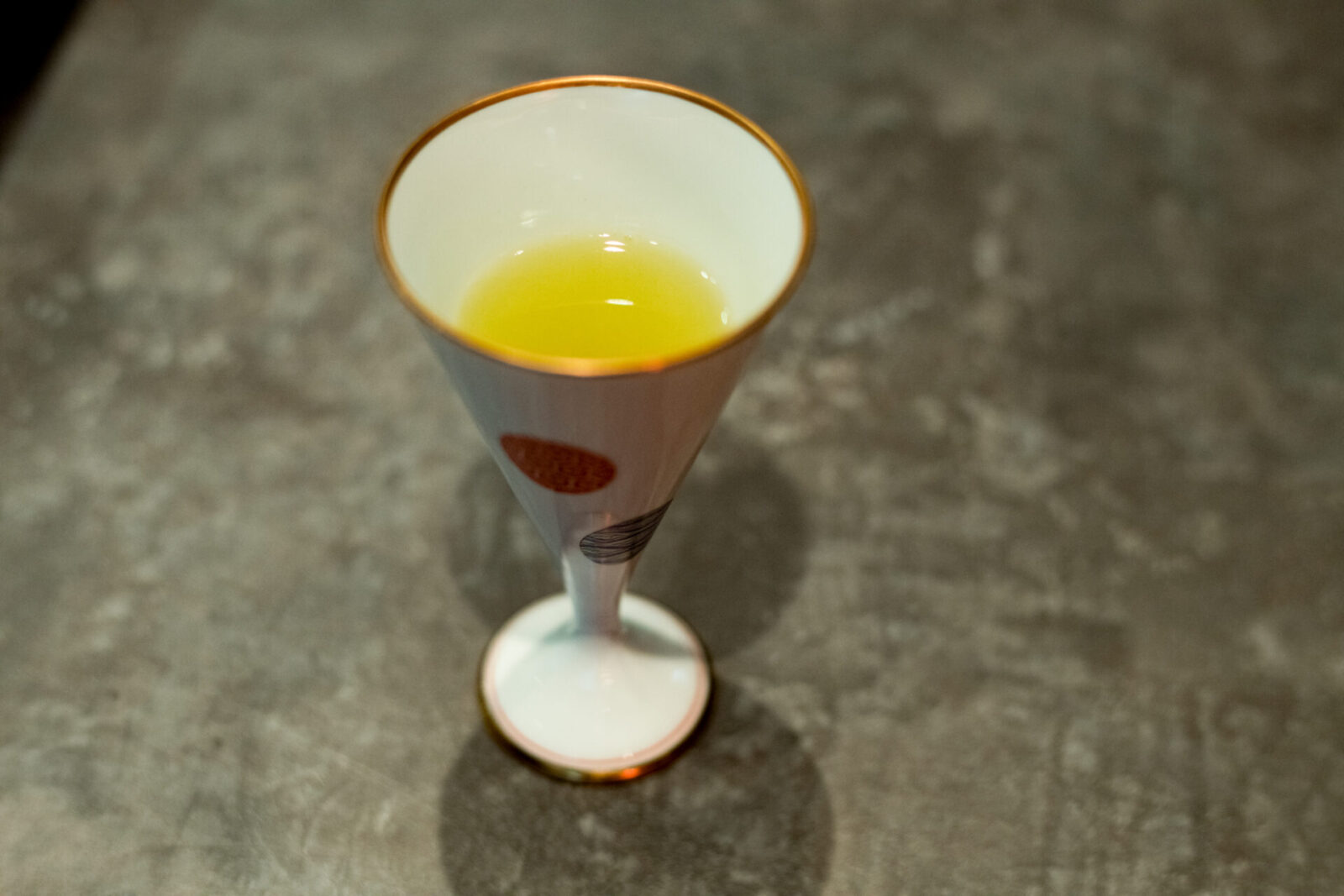
In 2014, Nishimura opened his French restaurant MAVO∞ in his wife’s hometown of Gion, Kyoto. Not long after opening the restaurant, an experience changed his life as a chef.
One of his customers at the newly opened MAVO∞ was from Gion Tsujiri, an old Uji tea shop that has been in the tea business since 1860.
That customer asked, “Can you prepare some hot water at 50 degrees for me please?”
When Nishimura tasted the cup of gyokuro, or the refined Uji tea this customer brewed for him, he was shocked at how delicious it was.
“It was the moment I felt my different ideas for non-alcoholic drinks connect and come together.”
In his search for non-alcoholic drinks that are sugar-free and won’t get in the way of the dishes, he found the special drink he could serve that is both rich and complementary to the cuisine through Kyoto’s Uji tea.
“At the same time, I felt ashamed that all this time I was only studying French cuisine and other imported and new ideas even though I am Japanese. I wondered how I had not realized that there is such a wonderful tea culture in Japan until then.”

Up to that point, Nishimura said he felt pressure to create a restaurant that belongs in Kyoto.
“I was afraid of being swallowed up by the atmosphere of Kyoto and I felt the difficulty of running a French restaurant here. I was too concerned about expressing wa, or Japanese culture.”
“When there is uncertainty in your heart, it shows in your work. There was a period of time where I had trouble listening to the ingredients, lacked concentration, and my senses felt numb. Even though I am a French chef, I never trained in Europe and perhaps that was one of the sources of my lack of confidence.”
It was at this time that Nishimura encountered the cup of gyokuro that melted his heart.
“It made me realize that I am indeed Japanese.”
“Ever since I embraced that, I have been able to focus on mastering the art of tea pairing and move forward. Now that I no longer have any uncertainties, I can stay grounded and there are no doubts in my mind.”
Exploring blending and brewing with the world’s best tea leaves
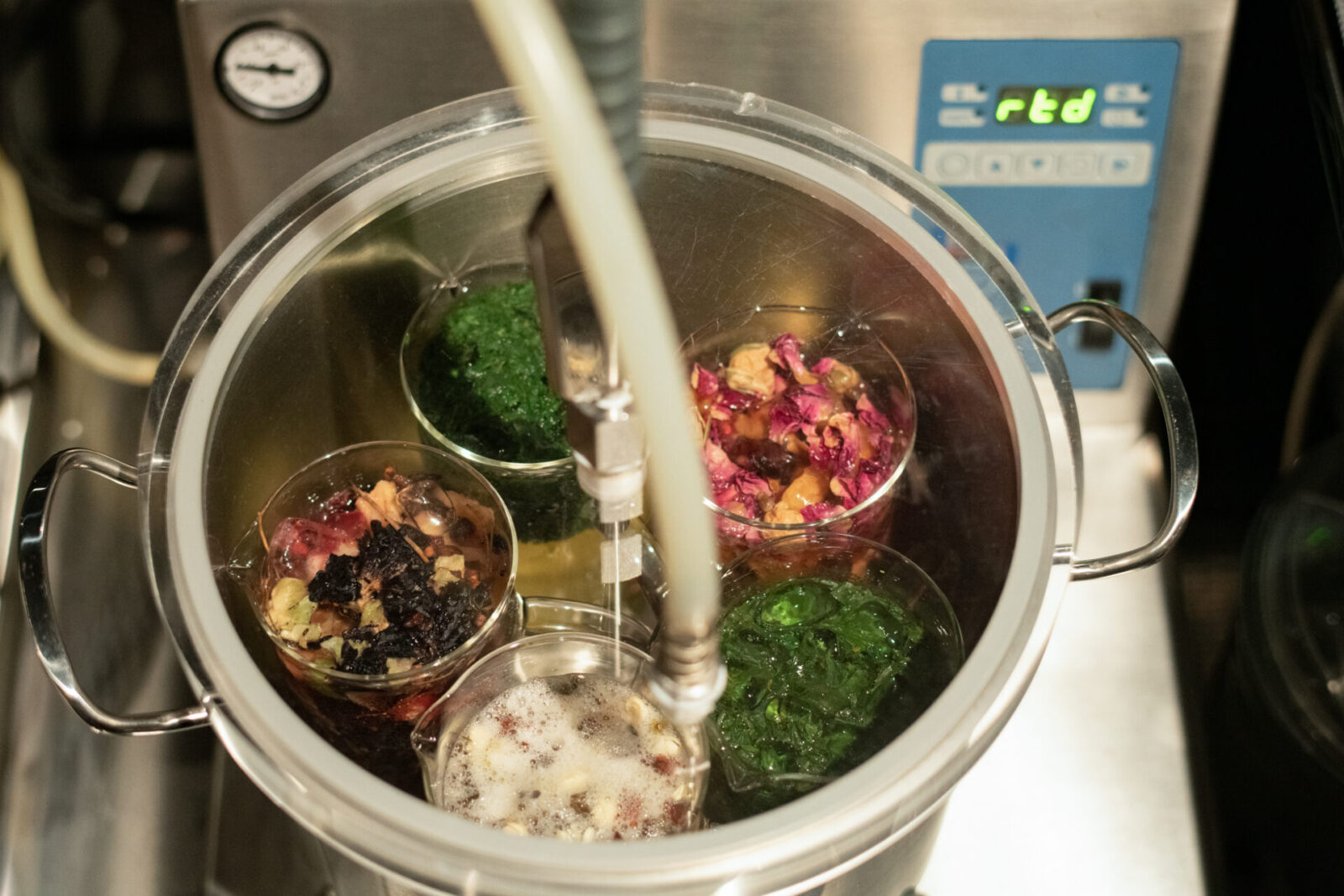
After Nishimura became enthralled by Japanese tea, he added tea pairings to his menu at MAVO∞. He spent days researching different blends and brewing methods of numerous tea leaves.
One day, Nishimura received a message on his social media account.
It read, “There is a tea that I would like you to taste. Let’s meet up right away.”
The message was from Kiyoharu Tsuji, a fifth generation tea farmer who inherited the traditional Uji method and has mastered the art of tea. Tsuji is a tea artist who has won many awards, including the Minister of Agriculture, Forestry and Fisheries Award in the Tencha category.
Tsuji visited MAVO∞ once a week and while Nishimura was researching tea pairing, he helped him with tasting and lectured him on how to brew tea.
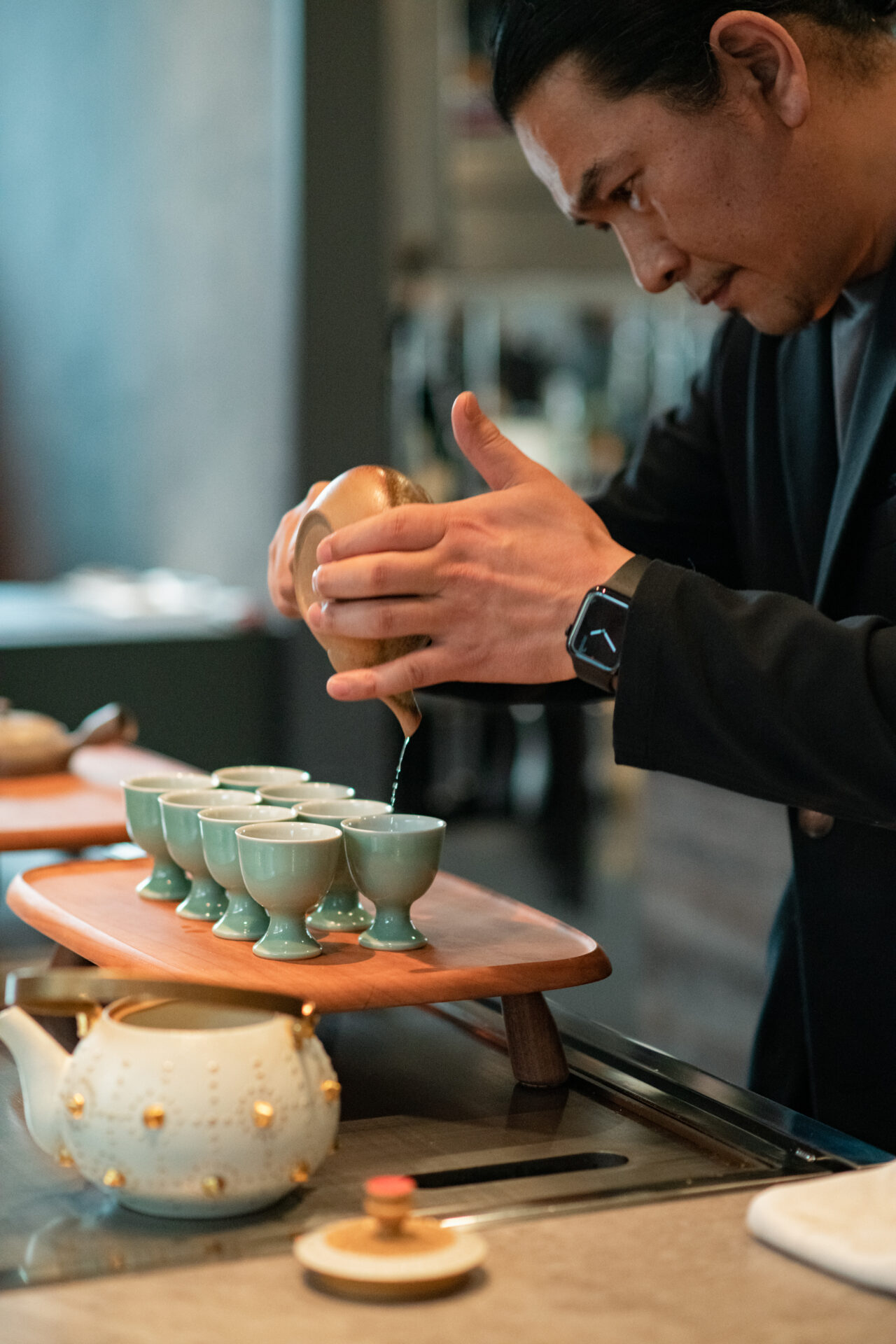
As Nishimura was struggling to get tea leaves from famous tea producing areas such as Shizuoka, Kagoshima, and Yame, Tsuji advised him on his “tendency as a chef” to want to collect ingredients from all over Japan.
He said, “Just focus on Uji first. I will deliver the tea that is best for you, all of which are top quality teas that are impossible to get because they don’t go out into the market.”
Tsuji told him about the connections between tea farmers and wholesalers that has continued since the Edo period, and the existence of special Uji tea that is only sold to chosen parties through generations.
From Sencha, Kabusecha, Gyokuro, Tencha and Matcha, Tsuji entrusted Nishimura with the finest single origin tea leaves in Uji.
Later, Tsuji was awarded the Emperor’s Third Prize at the Agriculture, Forestry and Fisheries Festival, which is considered the highest honor.
“If I had met him after he had received this award, perhaps he would not have had time for me so I am thankful that I was able to make his acquaintance at the right time. Because of that, I am able to serve tea that isn’t available anywhere else in the world at MAVO∞.”
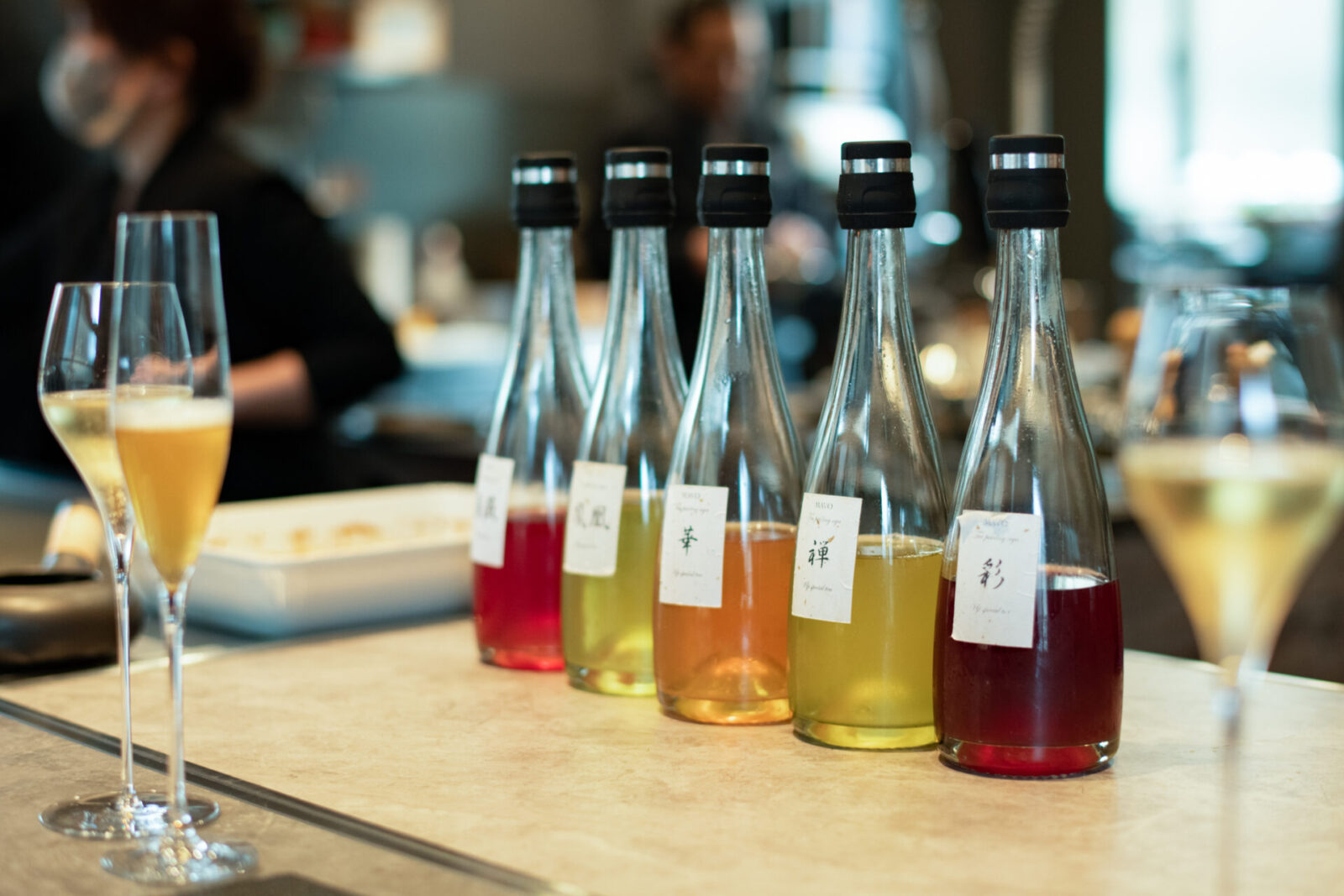
“In Japanese cuisine, it was considered inappropriate to drink tea with your meal so there has never been much of a culture to drink tea while eating. Tea was for after eating sushi or to be had along with sweets. I want to create a new style where people enjoy tea that goes well with food that can be enjoyed during the meal.”
Nishimura explored all ways of brewing tea, not just in a teapot, but also brewing with water or ice water.
His craftsmanship paid off and after repeated trial and error, he is now able to create a deliciously clear tea that is full of flavor.
The ultimate, three dimensional flavor pairings

At MAVO∞ they have seven types of tea or tea pairings.
Each is brewed to match the ingredients for the dishes of the day, and the contents of the blends are slightly adjusted and then the tea is bottled. The bottle is cooled in the fridge and returned slightly to room temperature before it is served.
Like wine, it is enjoyed one sip at a time. This is how to enjoy tea pairing and the collaboration of tea and food to the fullest.
Nishimura explains that it is made up of “3 S”s: synchronization, sublimity, and synergy.
The combination of these three elements creates a three dimensional flavor in the course.
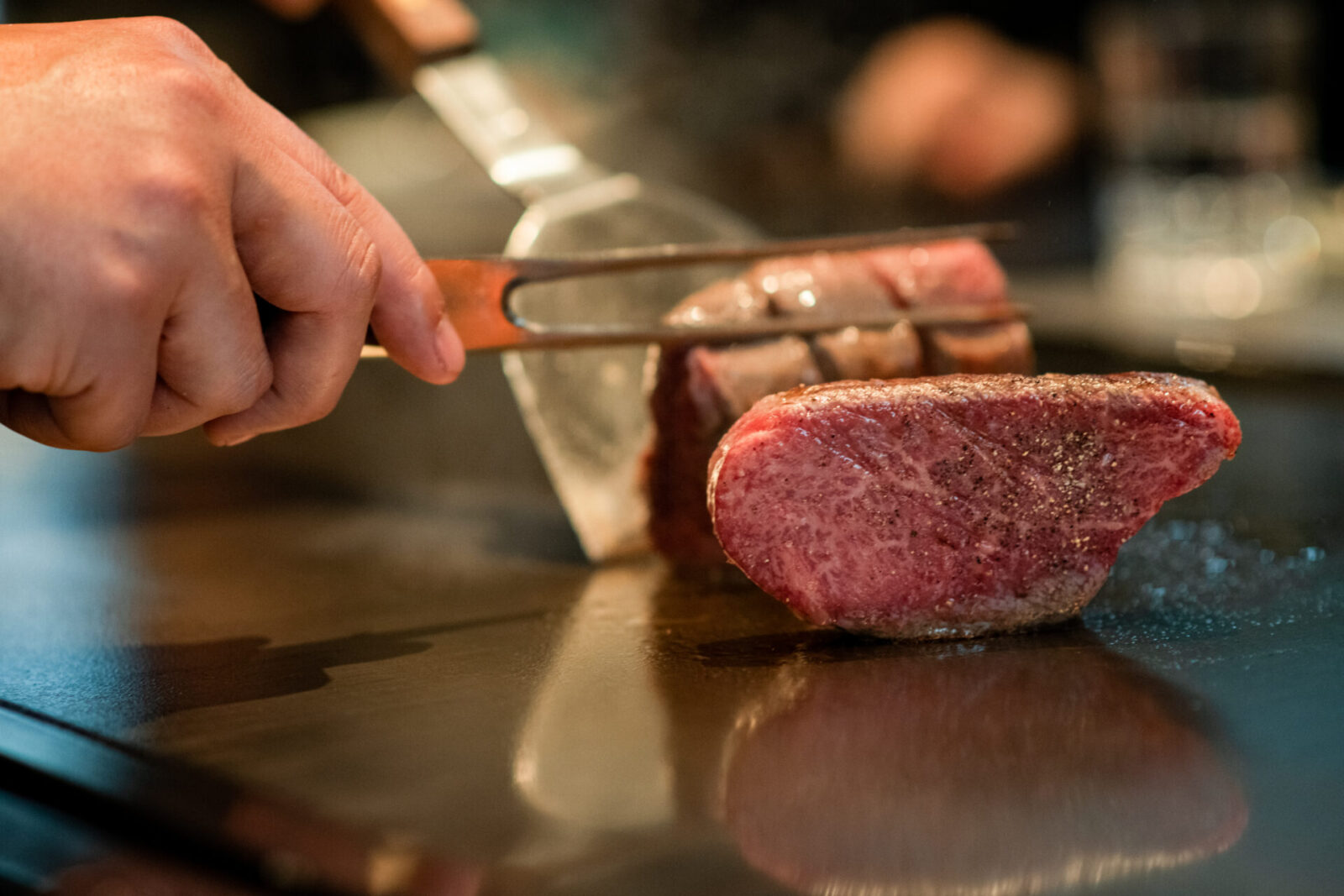
The main course of the day was the highest grade Saga beef fillet in a red wine sauce.
What kind of tea pairing can compliment this steak?
A hojicha-based tea blended with black currant, cranberry, fig, black pepper, and octagon was poured in a wine glass. It looked as bright as red wine and had a complex multi-layered flavor.
The scent of the spices and fruit complimented the aged and savory flavor of the meat.
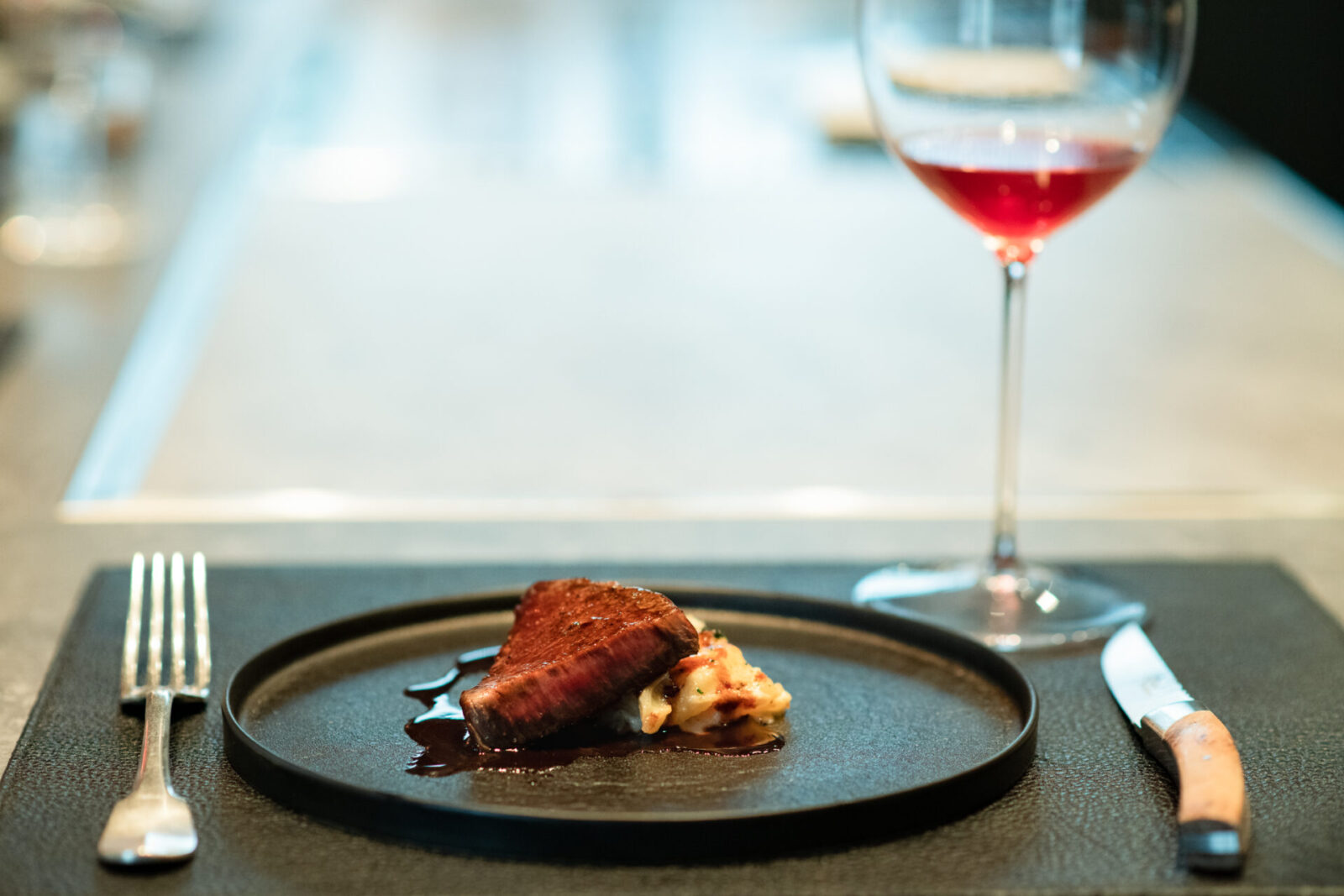
The flavor created by the pairing had a lingering aftertaste. This is the “ultimate pairing” created by carefully calculated synchronization, sublimity, and synergy.
One marvelous surprise followed another as we savored the unique experience that can only be experienced here.
Taking root in a new location during the pandemic

The coronavirus pandemic brought hardship to Nishimura. When the state of emergency was announced in April 2020, Nishimura decided to close MAVO∞. A year later, he has been making preparations to open a new restaurant in Gion.

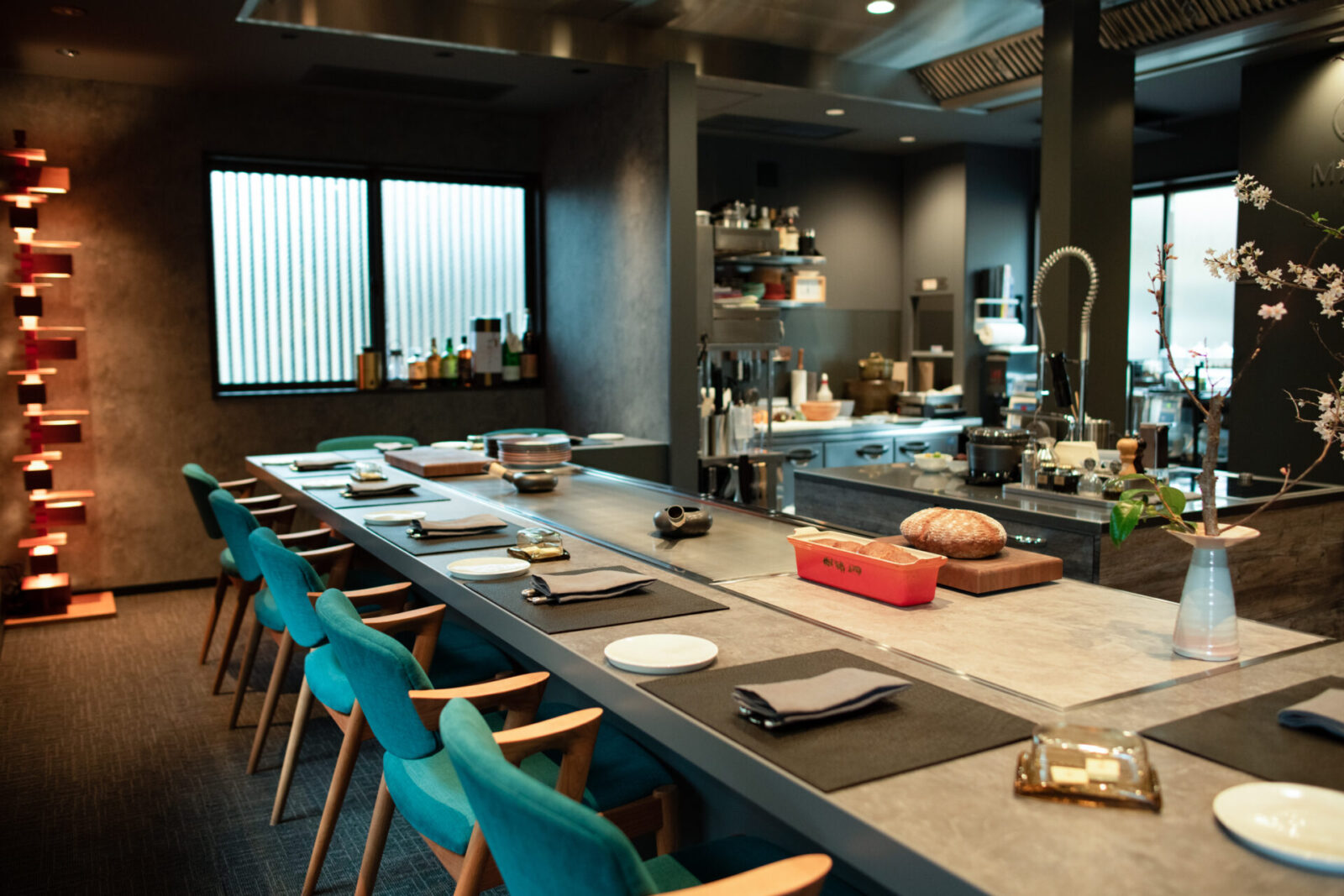
The first floor of the new restaurant has an open kitchen with a large teppan grill in front of the counter. The restaurant has been designed with the latest ventilation system imported from Germany to create a safe eating space by implementing the latest precautions against the coronavirus.
With the ongoing pandemic, restaurants continue to be under restrictions for serving alcohol. Consequently, it can be said that tea pairing is a way of enjoying cuisine that matches the current pandemic situation.
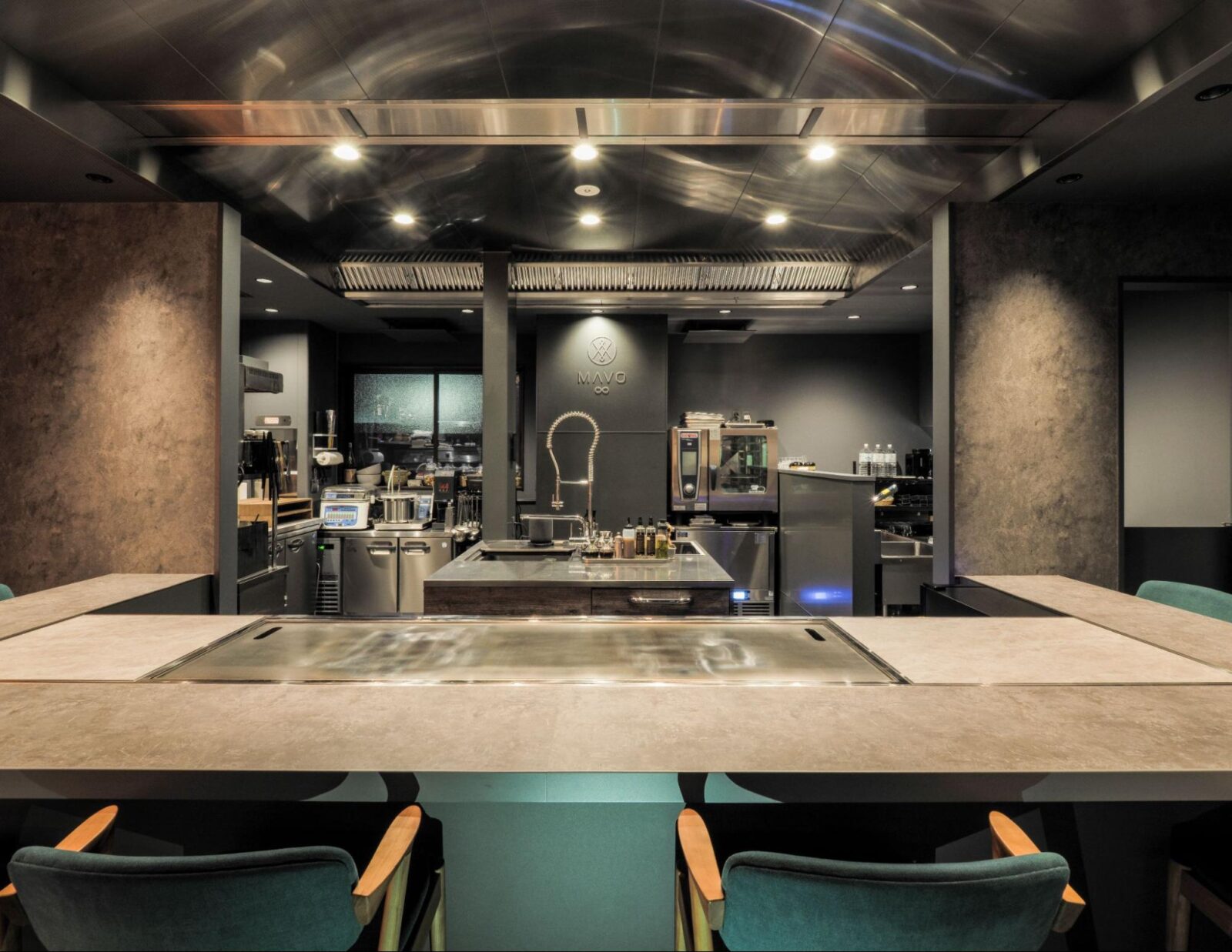
Nishimura also went against the common practice of restaurants and decided to only open his new restaurant three days a week.
“Rather than just focusing on mastering cuisine, I think it is necessary to have time and space to create diverse and new things. In order to make tea pairing more popular, I want to work on my new business as well.”
For this purpose, the second floor of the building is separated from the restaurant and Nishimura built a there laboratory to test new ideas. Unlike the first floor, it is designed like a salon where events such as workshops can be held.
In August 2021, he began offering courses to teach tea pairing techniques, and he hopes that the knowledge and skills he has developed will be useful to other restaurants.

In his journey of exploring the world of French cuisine and tea pairing, Nishimura found a place for new beginnings. What kind of future does he envision here?
“I am no longer interested in just improving myself or making my restaurant famous. Rather than trying to grow flowers that become fruits, I want to use my energy to strengthen roots to grow thicker and wider.”
“In order to promote Japanese tea to people around the world, I want tea pairing to take root as a new culture. I hope this will be my way of giving back to the tea producers in Japan.”
Nishimura is a true expert in tea pairing who promotes the appeal of Japanese tea from Kyoto to the world.
We look forward to collaborating with him and DIG THE TEA as we explore new ways to create “tea time”.
Photo: Yuko Kawashima
Translation: Sophia Swanson
Editor. Born and raised in Kagoshima, the birthplace of Japanese tea. Worked for Impress, Inc. and Huffington Post Japan and has been involved in the launch and management of media after becoming independent. Does editing, writing, and content planning/production.
Editor and creator of the future through words. Former associate editor of Huffington Post Japan. Became independent after working for a publishing company and overseas news media. Assists in communications for corporates and various projects. Born in Gifu, loves cats.
